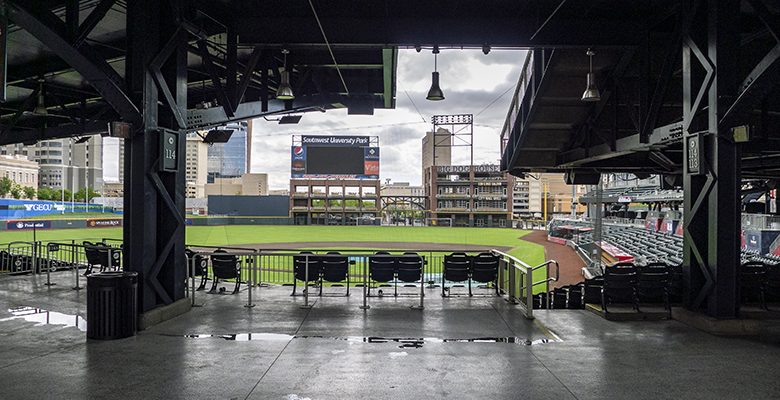I am tired of writing about the ongoing swindle that local governments keep trying to pull on us. I’m talking about the arena.
I know that you’re probably as tired of reading about it as I am of writing about it. Yet, local governments keep pushing for an arena.
The only two declared mayoral candidates are ready to move forward with some grand arena.
Woe unto us.
Here’s the latest piece from the Harvard Kennedy School highlighting the pitfalls of public financing of sports stadiums:
“Economic research for decades has found that, by and large, the fiscal returns for residents — in the form of increased economic activity and job growth — are far smaller than public expenditures, which often approach half a billion dollars,” he writes. “This primer will help journalists understand the history of public financing for stadium construction and empower them to use academic research to interrogate claims that these projects mean big bucks for communities.”
Among the takeaways in Merrefield’s new piece:
- Journalists often report figures from press releases and advocacy reports when covering proposed stadium projects without questioning the assumptions of those analyses, according to a 2023 review in the Journal of Policy Analysis.
- Every 100 visits to a baseball stadium will generate 29 visits to nearby restaurants and similar establishments, and six visits to retail stores according to a 2023 study in Regional Science and Urban Economics. The same study finds very little local business impact for basketball and hockey arenas. And overall, research finds stadiums tend to shift economic activity, not create new spending.
- Of the 57 stadiums built in the past two decades for the four largest American sports leagues, about 4 in 10 were financed at least in part with municipal bonds exempt from federal taxes, according to a 2020 study in the National Tax Journal, which examines the estimated value of those bonds. The researchers find that the estimated loss in tax revenue was considerably higher than the value of the federal tax exemption.
To bad our local journalists didn’t utilize their critical thinking skills back in 2012. If they had, maybe we wouldn’t be having this discussion now.
“The same study finds very little local business impact for basketball and hockey arenas. And overall, research finds stadiums tend to shift economic activity, not create new spending.”
Every dollar that is spent at a taxpayer subsidized sports facility is a dollar that isn’t spent at some other local venue. It’s a dollar that’s not contributing to a child’s education. It’s a dollar that’s not spent on milk and eggs.
It’s a dollar that isn’t spent on some municipal program that might actually benefit the residents of the city.
That’s in addition to the money that is spent on the taxes that support these venues.
And because everyone pays taxes, publicly subsidized sports stadiums exert inflationary pressure on every item in every store.
It’s a lose/lose proposition, for everyone except the contractors and construction companies and the businesses that benefit directly from ticket and popcorn sales.
The evidence is overwhelming, but our politicians know what’s good for us, and to hell with the evidence.


And, as long as we continue to put up with our nearly fatal voter apathy in this town, things will not change.
“To bad our local journalists didn’t utilize their critical thinking skills back in 2012.”
Back in 2012, the local press and, especially, the EP TImes were the biggest cheerleaders for the stadium. They even collaborated to suppress news of dissent, and called the dissenters “crazies” and “wailers.” They pushed the narrative that we had to move quickly or risk losing the opportunity to buy the Tucson farm team. Only The Inc, published news of dissent and an interview with Larry Francis critical of the AAA.
I notice they are mostly silent now on the arena promotion by the Downtown Mafia, but it is a horse has been beaten to death after ten years. Time to move on.
I’d agree that it’s time to move on, but the arena plan won’t go away.